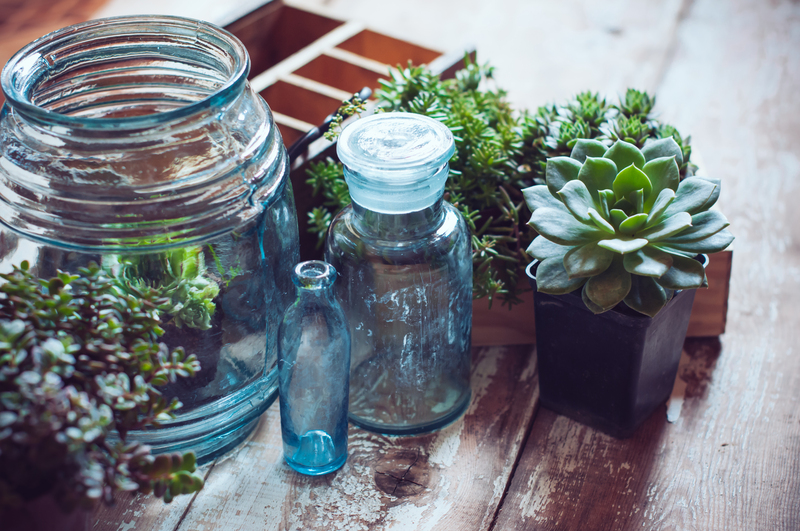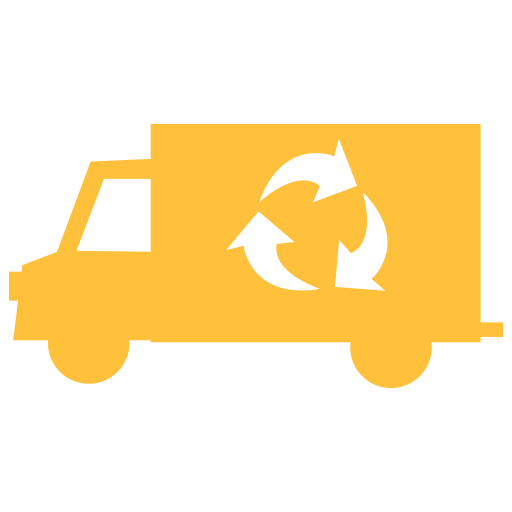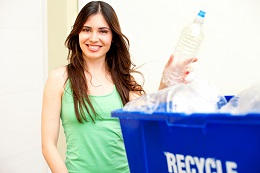Steering Clear of Hazardous Plastics for a Greener Life
Posted on 23/06/2025
Steering Clear of Hazardous Plastics for a Greener Life
In today's fast-paced society, plastic has become an integral part of daily life. From food packaging to water bottles, its convenience is hard to ignore. Yet, the negative environmental and health consequences of hazardous plastics are becoming increasingly alarming. If you're looking to make a positive impact on the planet and your well-being, learning how to steer clear of dangerous plastics and embrace more eco-conscious choices is pivotal. In this comprehensive guide, we'll explore why avoiding harmful plastics matters, identify the most hazardous varieties, and share practical strategies to support a greener lifestyle.

Understanding Hazardous Plastics: What Should You Avoid?
Before we can minimize risky plastic exposure, it's essential to understand what makes certain plastics more dangerous than others. Most plastics are identified by a resin identification code (usually a number inside a triangle), which indicates the type of plastic.
Common Types of Plastics and Their Risks
-
Polyvinyl Chloride (PVC) - #3:
Found in: Plumbing pipes, shower curtains, toys, food wrap
Why hazardous? PVC is frequently softened with phthalates, chemicals that can disrupt hormonal balance. It may also leach toxic compounds like dioxins during manufacturing or incineration. -
Polystyrene (PS) - #6:
Found in: Foam cups, takeout containers, egg cartons
Why hazardous? Contains styrene, a potential carcinogen. Polystyrene is difficult to recycle, and breaks into microplastics that pollute environments. -
Polycarbonate/Other (PC/Other) - #7:
Found in: Baby bottles, reusable water bottles, food containers
Why hazardous? Can contain Bisphenol A (BPA), which mimics estrogen and may impact neurological and reproductive health.
Why Are Certain Plastics More Hazardous?
The risks associated with plastics largely boil down to chemical leaching and persistence in the environment. Hazardous plastics can release dangerous additives into food, drinks, and our surroundings--posing long-term threats to our health and ecosystems.
- Endocrine Disruptors: Chemicals like BPA and phthalates can interfere with hormonal systems, increasing risks of cancer, infertility, and developmental issues.
- Environmental Pollution: Hard-to-recycle plastics clog landfills and waterways, break into microplastics, and harm marine life.
- Release of Toxic Byproducts: The production and incineration of hazardous plastics generate pollutants like dioxins and furans, which are highly toxic even in small amounts.
Health and Environmental Impacts of Hazardous Plastics
Human Health Risks
Steering clear of hazardous plastics isn't just about saving the planet--it's about protecting our bodies. Scientific research has linked chronic exposure to certain plastics and their additives to:
- Hormonal imbalances, developmental delays, and behavioral problems in children
- Reproductive disorders and fertility problems in adults
- Increased cancer risk
- Obesity and metabolic disorders
- Neurotoxicity and immune suppression
Environmental Crisis: The Cost of Plastic Pollution
Plastic pollution has reached alarming proportions globally. Every year, over 8 million tons of plastic waste ends up in the oceans, threatening wildlife and marine ecosystems. Many plastics don't decompose for centuries, and microplastics are now found in drinking water, soil, and even the air we breathe.
- Wildlife Threat: Animals ingest or become entangled in plastic debris, leading to injury and death.
- Food Chain Contamination: Microplastics consumed by aquatic organisms can travel up the food chain, potentially ending up on our plates.
- Biodiversity Loss: Persistent plastic debris disrupts natural habitats and can accelerate species decline.
Smart Choices: How to Minimize Hazardous Plastic Use
Read Labels and Know the Codes
One of the first steps to a greener life free from toxic plastics is learning to identify and avoid hazardous plastics by their recycling codes. Here's how to spot safer options:
-
Choose Plastics #1, #2, #4, and #5:
These are generally considered less hazardous--for example, #1 (PET) for beverage bottles, #2 (HDPE) for milk jugs, #4 (LDPE) for shopping bags, and #5 (PP) for yogurt cups. -
Avoid Plastics #3 (PVC), #6 (PS), and #7 (Other/PC):
These are associated with more toxic chemicals and lower recyclability.
Switch to Safer Alternatives
There are numerous eco-friendly alternatives that can reduce your exposure to hazardous plastics and lessen environmental footprints:
- Stainless steel: Durable and perfect for water bottles, food containers, and drinking straws.
- Glass: Safe for food storage, microwave use, and does not leach chemicals.
- Bamboo: Biodegradable and excellent for cutlery and dishware.
- Natural fibers: Cotton, jute, and hemp make great reusable grocery bags and food wraps.
- Plant-based bioplastics: Compostable and made from renewable resources. Though not perfect, they offer a step forward.
Avoid Single-Use Plastics
- Use reusable bags, bottles, and coffee cups.
- Say no to plastic straws, stirrers, and cutlery--carry your own alternatives.
- Opt for bulk purchases and products with minimal packaging.
- Support brands with plastic-free or recyclable packaging.
Everyday Habits for Steering Clear of Harmful Plastics
Lifestyle Tweaks for Healthier Choices
Going plastic-free for a greener lifestyle doesn't have to be overwhelming. Incorporate these simple habits into your daily routine:
- Carry reusable shopping and produce bags to avoid disposable alternatives.
- Choose bar soap, shampoo bars, and bulk-refill products instead of those in plastic bottles.
- Invest in beeswax wraps or silicone lids instead of plastic wrap for food storage.
- Avoid microwaving food in plastic containers, as heat can cause chemicals to leach.
- Refill water bottles from home filters and skip bottled water.
- Buy loose produce and bring your own containers when shopping for grains and snacks.
- Seek out second-hand or upcycled products over plastic packaging.
Be an Informed Consumer
Always do your research. Check for BPA-free labels, but remember that alternatives like BPS may also pose risks. When in doubt, prioritize glass, metal, or uncoated paper. Support companies committed to reducing unnecessary plastic and transparent about their materials.
Community Action & Advocacy for Plastic Reduction
The Power of Collective Change
While individual efforts matter, tackling the hazards of plastic pollution requires community-level and global shifts. Here's how you can contribute beyond your home:
- Advocate for local bans on single-use plastics in your community.
- Participate in neighborhood clean-ups or coastal restoration days.
- Push for improved recycling infrastructure and clear education on what actually gets recycled.
- Support legislation demanding producer responsibility for plastic waste.
- Share knowledge with friends, family, and social networks to amplify impact.

The Future: Moving Toward a Sustainable, Plastic-Free World
Innovations and Policy Shifts
Fortunately, the movement towards steering clear of hazardous plastics is gaining momentum. Industries and governments worldwide are responding to consumer demand by investing in:
- Breakthroughs in sustainable packaging, like edible wraps and mushroom-based containers.
- Stricter regulations on toxic plastic additives and microplastic production.
- Eco-certifications and clearer labelling systems to inform consumers.
- Investment in circular economy models--keeping plastic out of nature and in use as long as possible.
Conclusion: Your Role in a Greener Tomorrow
Choosing to steer clear of hazardous plastics isn't just a trend--it's a critical responsibility for every individual committed to a healthier, greener life. While society is still dependent on plastic in many forms, educating yourself on the risks and making mindful choices can significantly lower your exposure to harmful substances and reduce your ecological footprint.
By prioritizing sustainable alternatives, advocating for meaningful policy changes, and inspiring others to join the cause, you play an essential part in shaping a cleaner, safer future for all.
Remember: every small step counts. Whether it's swapping a single-use bottle for a stainless steel one or encouraging your workplace to go plastic-free, your daily decisions have lasting power. Start today and make the commitment to live free from hazardous plastics--for yourself, your community, and the planet.

 020 3795 6999
020 3795 6999 020 3795 6999
020 3795 6999




 House clearance
House clearance Rubbish collection
Rubbish collection Here at Rubbish Junk we give you the unique opportunity to keep your home free of clutter at prices that will constantly please you. Other domestic clearance companies in London might be...
Here at Rubbish Junk we give you the unique opportunity to keep your home free of clutter at prices that will constantly please you. Other domestic clearance companies in London might be... Rubbish Junk knows what to do to keep your home rubbish-free. When you are facing a situation that requires clearance services,...
Rubbish Junk knows what to do to keep your home rubbish-free. When you are facing a situation that requires clearance services,...



